#velvet mite
Photo


Velvet mite, unknown species, Microtrombidiidae
Photographed in Thailand by Nicky Bay // Website // Facebook
Photos shared with permission; do not remove credit or re-post!
#animals#curators on tumblr#bugs#arachnids#mite#microtrombidiidae#trombidiform mite#velvet mite#red velvet mite#one nice bug
667 notes
·
View notes
Text
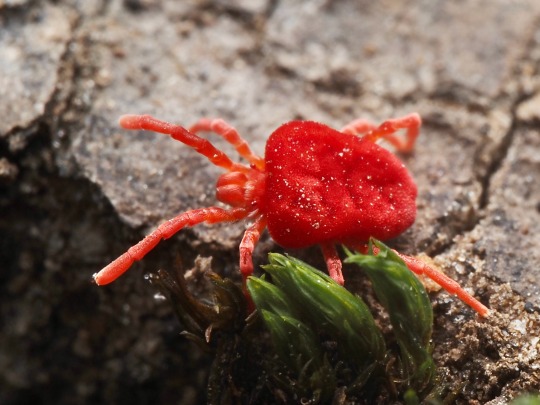
I saw a velvet mite today! these big mites go through a bizarre series of growth stages before ending up as predatory mobile plush cushions.
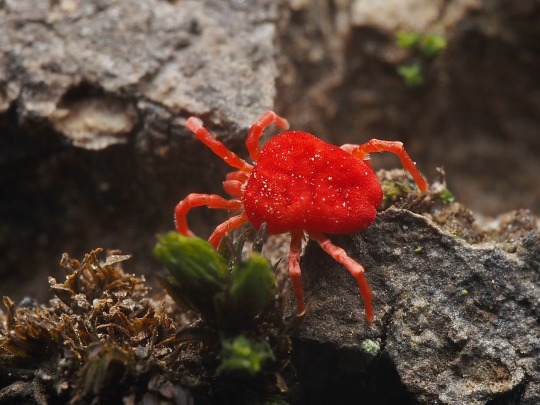
this one had butt cheeks
1K notes
·
View notes
Text


hi ronald! one of the prettiest mites you ever did see (genus ronaldothrombium)
#velvet mite#mite#arachnids#arachnida#acari#trombidiformes#trombidioidea#trombidiidae#ronaldothrombium#<- arguably can't be 100% sure that it's ronaldothrombium because they have not been described as adults#and while ray fisher did rear larvae (i think off of juvenile salticids) that hasnt been published#but who give a shit
2K notes
·
View notes
Text
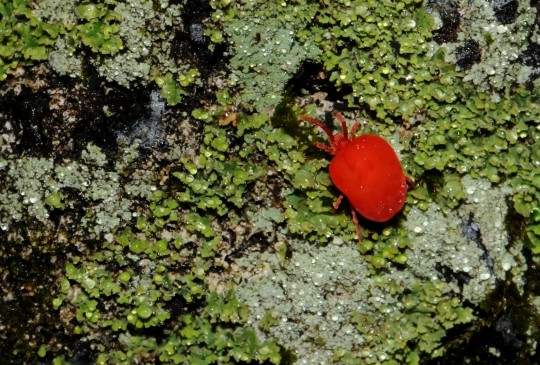
velvet mite on lichen
298 notes
·
View notes
Text
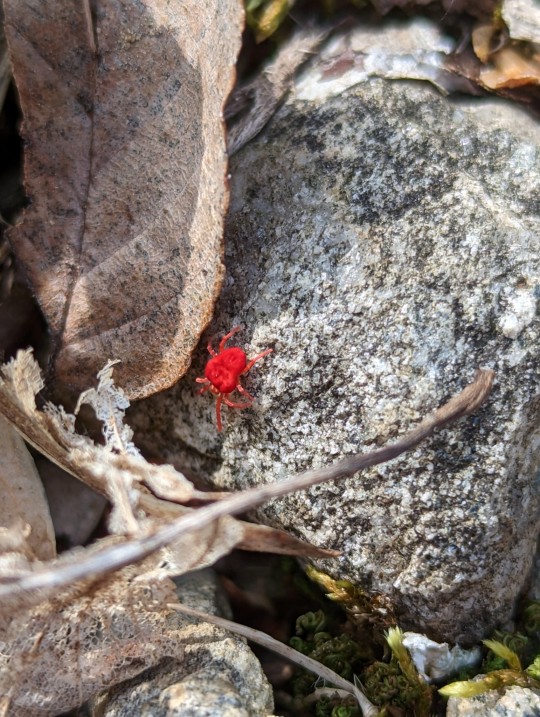

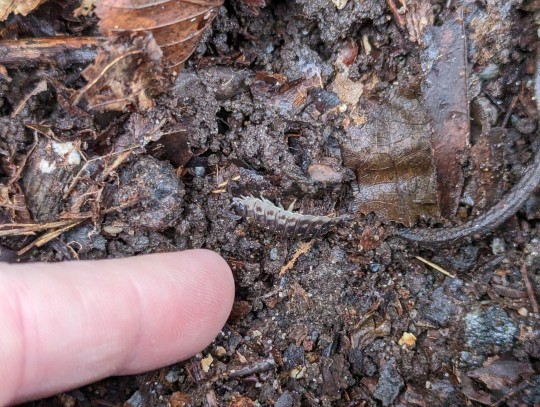
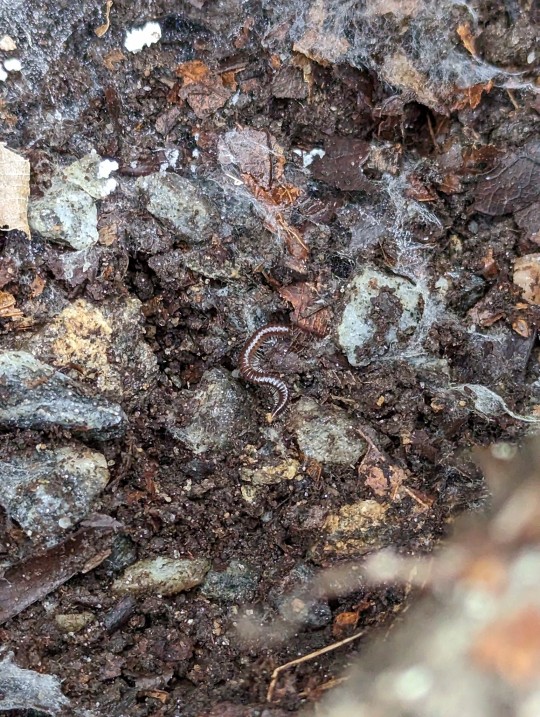

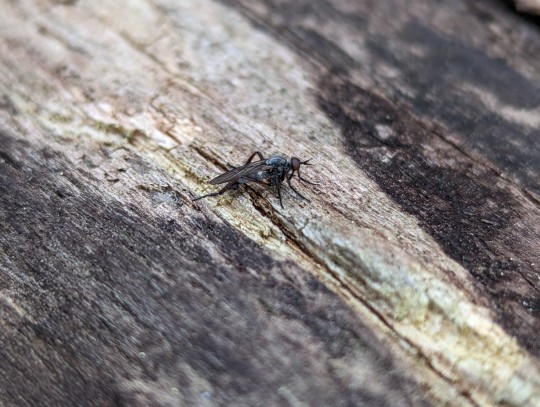
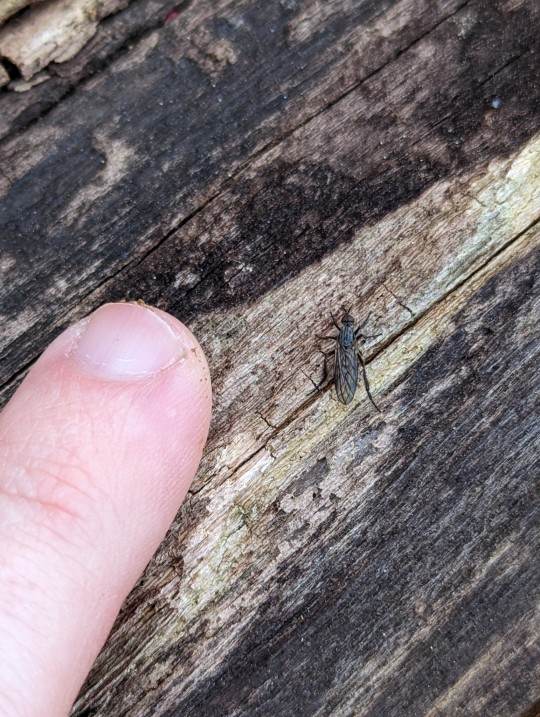
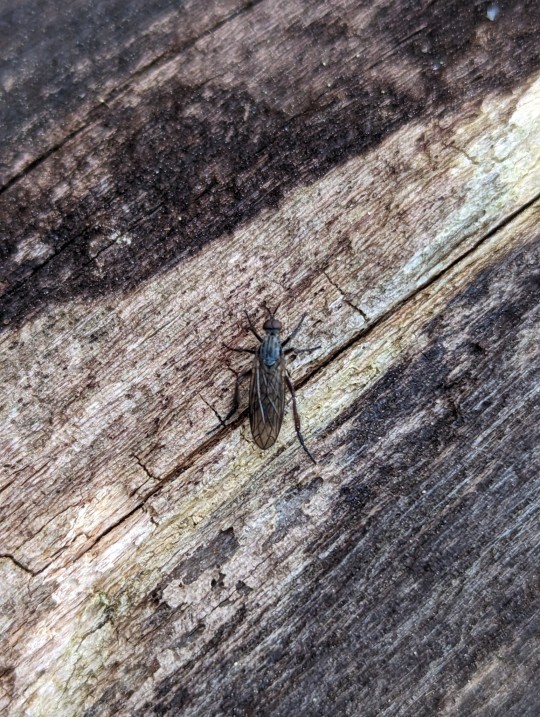
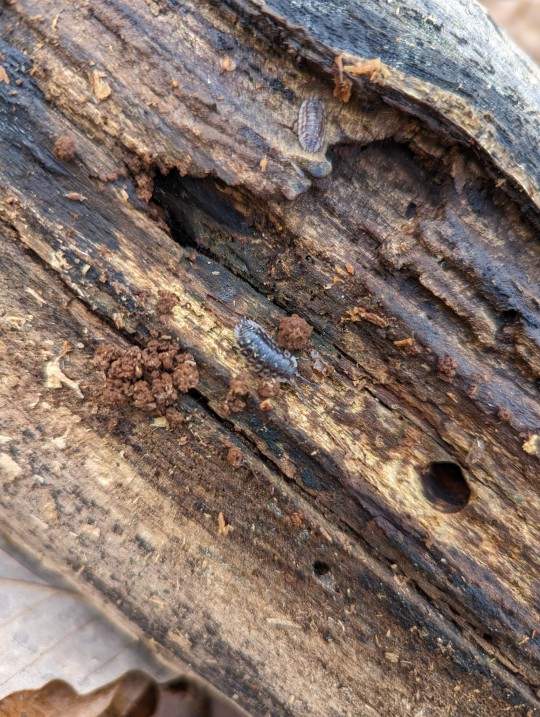
early spring newcomers hanging out in/on logs!!! welcome back, bugs!! @smellyunfortunate was really surprised that fly didn't fly away with my finger right there (it was def alive), but we don't recognize it! (Not asking for an id, just sharing friends!)
@onenicebugperday
58 notes
·
View notes
Text

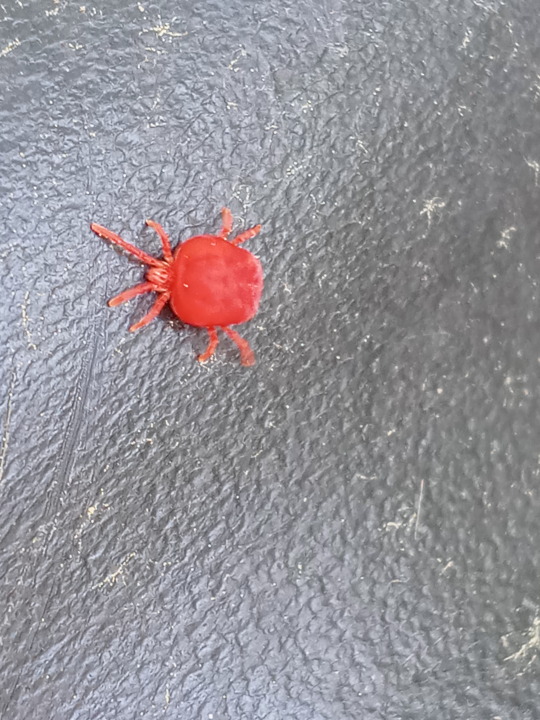



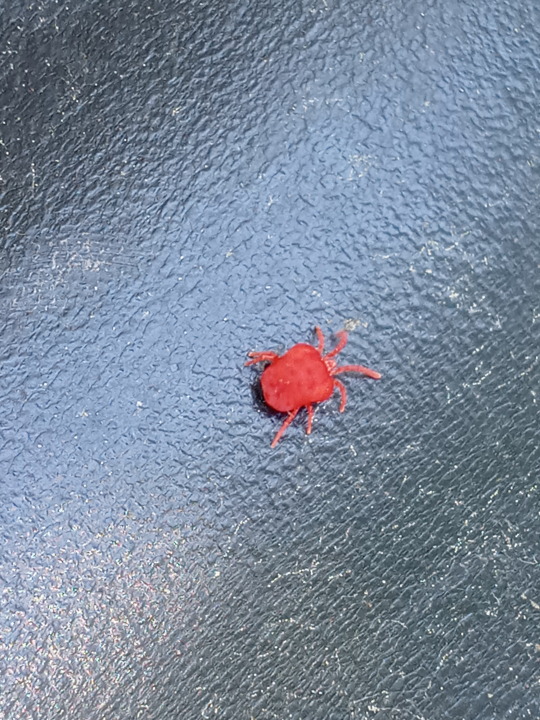
[PHOTOS TAKEN: APRIL 11TH 2023 | Image IDs: Multiple angles of a bright red velvet mite (Arachnid of the family Trombidiidae) crawling on a rough, dirty, black, plastic surface /End ID]
I love this thing's color, it's rare that I see a mite that's THIS bright!
#Mite#Mites#Trombidiidae#velvet mite#Arachnid#Arachnids#Arachnophobia#arthropods#Bugs#Bug#invertebrates#Bugblr#Photos#Photo#Wasp House Buzzing
66 notes
·
View notes
Text
We've just added some new patch designs to our Etsy
Find them here!

#vulture culture#smallbusiness#handmade#cottagecore#altfashion#sew on patch#amphibians#reptile#axolotl#salamander#punk fashion#hand dyed#beetles#bugblr#velvet mite#cottagepunk
34 notes
·
View notes
Photo
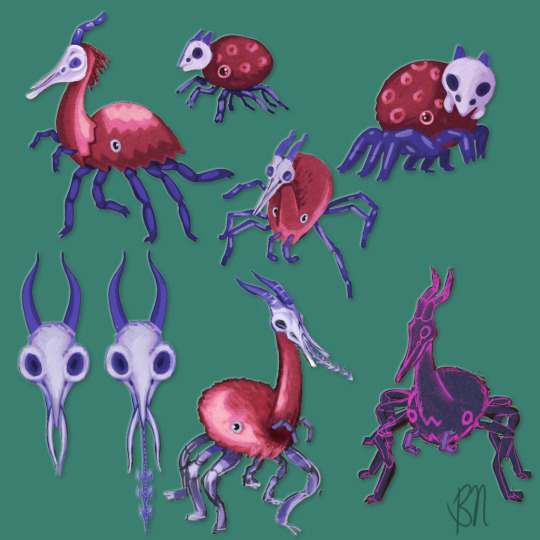
deer ticks, tick deer
babies stand atop stumps or branches and ‘hug’ passing animals to catch a ride
they rub their bodies on trees to remove seasonal velvet
their proboscis is used to suck sap from trees
#velvet mite#deer tick#fakemon#i guess??#based on dikdik and uhhh#that one rly fucked deer. harrisons antelope or smth#original art
6 notes
·
View notes
Text
So I have a little Trombidium mite in a teeny tiny terrarium that I raised from a pupa (after finding him pupating in a container I put a firefly in) for scientific purposes. I highkey have just left him in the little terrarium for several months now, and he routinely just Disappears and I don't see him for a few weeks at a time. Well he disappeared like three months back, and I kinda forgot about him until like last week, when I used a stick to prod through the dirt to try and find him. I did not succeed. I resigned myself to waiting for the freshly misted dirt to dry before digging out his corpse to send to an acarologist friend, and then put that off too.
So anyways, I just got home today, and bro was just out crawling around on a leaf.
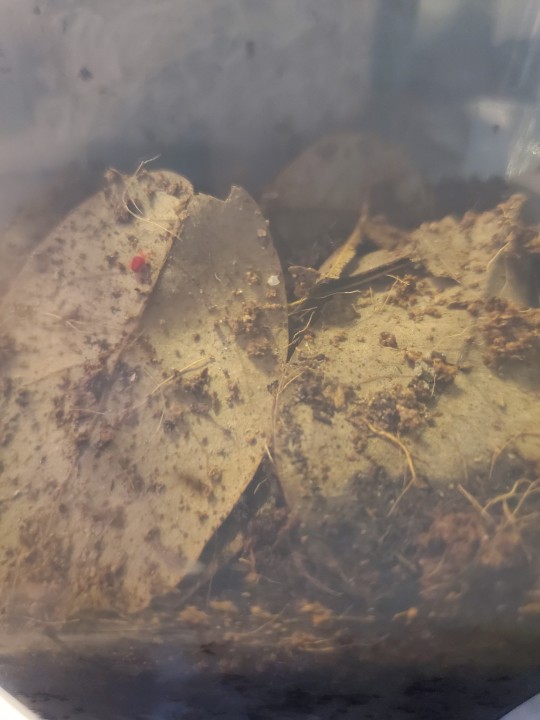

Remind me not to underestimate him again.
#he needs a name#mite#mites#Trombidiidae#Trombidiformes#Trombidium#velvet mite#arthropods#bugs#arachnids#red bug#little baby man#entomology#acarology#pet bugs#i fucking love mites#bugs /
2 notes
·
View notes
Text

Saw this little velvet mite the other day! probably a bucket list animal for me. thanks to @sentient-deer-skull for spotting this!
1 note
·
View note
Text
THERES A VELVET MITE ON MY COMPUTER RUNNING SO FAST THAT I CANT SEE ITS LEGS MOVING IT LOOKS LIKE ITS JUST MOVING ACROSS MY LAPTOP LIKE A VERY FAST ROOMBA
ITS FPS IS TOO HIGH FOR MY BRAIN ???!!!!!!!,,,
1 note
·
View note
Text
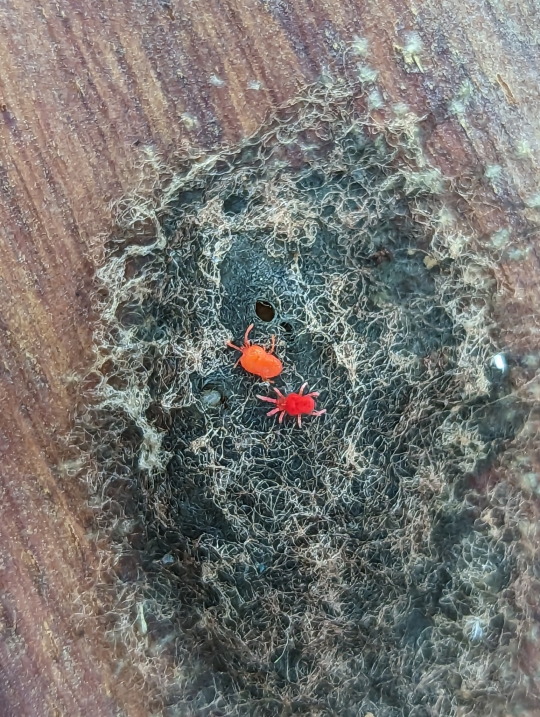

Velvet Mites on Old Spider Eggs
Unidentified, superfamily Trombidioidea
24/03/23 - NSW, Dapto
#invertebrates#invertblr#Arthropods#Arthropoda#bugblr#bugs#bug#bugs tw#Trombidioidea#unidentified#Velvet Mites#Acari#Mites#Arachnida#Arachnids#Chelicerata#Chelicerates
299 notes
·
View notes
Text

Insert An Invert Week 4: Around Logs; Velvet Mites
#its not one specific species of velvet mite#more of a velvet mite collage#arachnids#bug art#bugs#bugblr#my art#insertaninvert2024#art
47 notes
·
View notes
Text
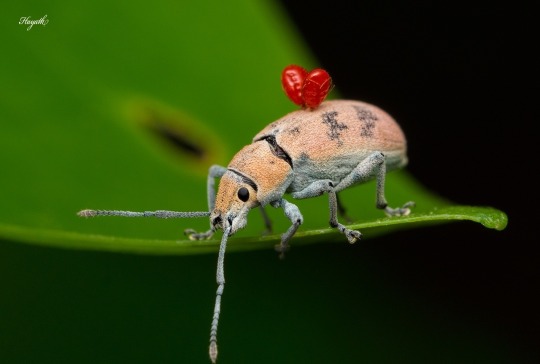
Even oriental broad-nosed weevils are not immune to bites from the love bug(mite)
(x by Hayath Mohammed, 2020)
#broad-nosed weevil#weevils#Myllocerina#(possible tags for the little mites:#erythraeidae#velvet mites
87 notes
·
View notes
Link
These non-parasitic mites feed largely on pollen and emerge during spring from eggs that were laid during the previous summer. One can easily spot these critters crawling around due to their striking bright red color, making them an object of both fascination and fear, given the association of red with danger.
The vivid coloration of these mites has not been subject to much scientific scrutiny. However, a study by researchers from Hosei University and Kyoto University, Japan, now suggests that the bright red pigment in these mites has a specific protective function.
Continue Reading
130 notes
·
View notes
